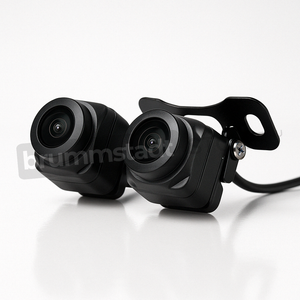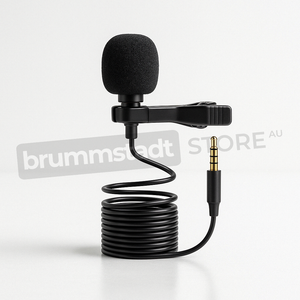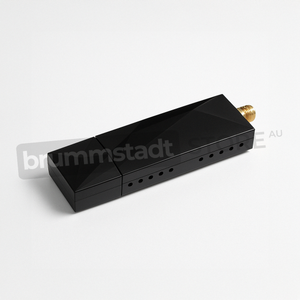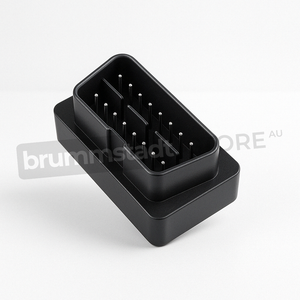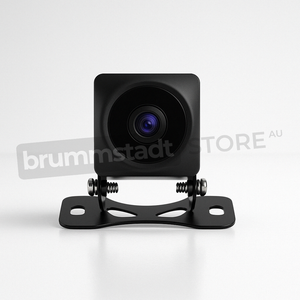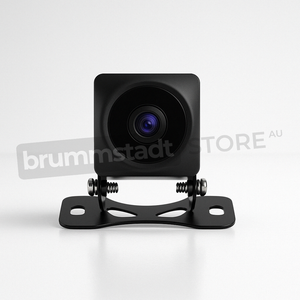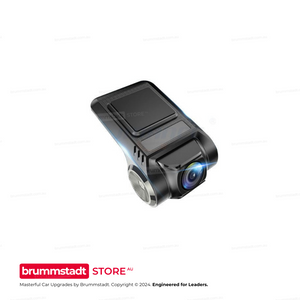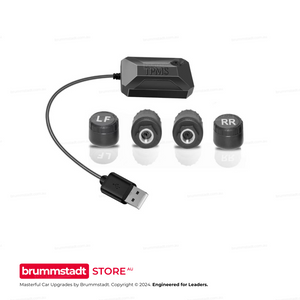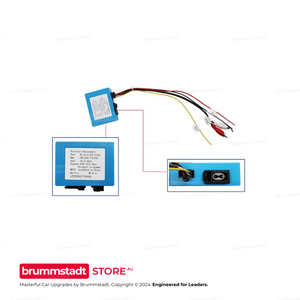Frequently Asked Questions
Everything you need to know about this head unit
Connect the single RCA cable with the yellow plug (included in your package) to extend your Bluetooth signal. This cable doubles as both a camera input AND a Bluetooth/WiFi antenna extension. The two small blue wires attached are antenna boosters that significantly improve connection stability. This simple connection takes 30 seconds and resolves 90% of Bluetooth issues. Make sure it's firmly connected even if you're not using a rear camera.
Try these proven solutions:
1. Quick Fix: Settings → Apps → Z-Link → Disable → Enable → Open (repeat each use)
2. Check Cables: Use the data/charge USB cable (not charge-only)
3. Bluetooth Setting: Disconnect all other Bluetooth connections - CarPlay needs exclusive access
4. Factory Reset Z-Link: Find the pink 'RESET' app, restart, reconnect Bluetooth, then try Z-Link
5. Sound Issues: Switch audio source to 'AUX' or 'USB/AUX' in your vehicle menu
Most issues are resolved with step 1 or 3!
The processor differs between models: The 2/32GB has a 4-Core processor, while 4/64GB and 8/128GB models feature the powerful 8-Core Cortex-A55 processor. Combined with RAM differences: The 2/32GB model with its 4-Core processor and limited RAM may experience slowdowns with heavy multitasking. The 4/64GB with 8-Core provides smooth performance for most users - no lag, seamless app switching, and enough storage for maps and music. The 8/128GB with 8-Core offers maximum performance with its generous RAM allowing unlimited multitasking and massive storage for extensive media libraries. Think of RAM like your desk space - more RAM means you can have more apps open simultaneously without slowing down.
Absolutely normal! These head units are complete replacement systems with their own GPS antenna, microphone, and Bluetooth module. Your factory connectors for these features won't be needed anymore. The important connections are: main power harness, speaker outputs, and the yellow RCA cable (even if not using a camera - it extends Bluetooth range). Any leftover factory plugs can be safely tucked away. If you're unsure about any connection, our support team is here 7 days a week.
Z-Link updates are handled through system firmware updates. Go to Settings → System → System Update. If an update is available, download it to a USB drive (FAT32 format) and install. Important: Never download Z-Link APKs from unofficial sources - they won't work and may cause issues. If you're having compatibility issues with newer iOS versions, the disable/enable workaround (Settings → Apps → Z-Link) usually resolves them while waiting for official updates.
Consider your usage:
• 2/32GB (4-Core): Budget option - fine for basic use, but may lag with multiple apps due to 4-Core processor and limited RAM
• 4/64GB (8-Core): Sweet spot - smooth Android Auto/CarPlay, multitasking, and ample storage
• 8/128GB (8-Core): Premium choice - unlimited multitasking, massive storage, future-proof for years
Most customers choose 4/64GB for the perfect balance of performance and value. The extra RAM makes a huge difference in daily smoothness!
The yellow RCA cable's blue antenna wires also boost WiFi signal! Make sure this cable is connected. Additionally, try these tips: Position the blue antenna wires away from metal surfaces, check that your phone's hotspot is set to 2.4GHz (not 5GHz) for better range, and ensure the head unit's WiFi sleep policy is set to 'Never' in Settings → WiFi → Advanced. For best performance with wireless CarPlay, keep your phone within 1-2 meters of the head unit.
Go to Settings → Sound → Equalizer and adjust to your preference. For more volume, increase the 'Loudness' setting. The 4/64GB and 8/128GB models have superior audio chips that provide cleaner, louder sound. If you have an amplifier, use the RCA outputs for best quality. Also check Settings → Factory Settings (password usually 126) → Audio settings for additional gain controls. Remember: higher-spec models (4GB+) include premium audio components for noticeably better sound.
Yes! Most vehicles work instantly. If not, use the steering wheel learning app: tap the steering wheel icon, press each button on your wheel, and assign functions. For newer vehicles with CANbus, we provide CANbus modules for automatic setup. Some vehicles may need the Key1/Key2 wires connected (usually included in our harness). If you're having trouble, let us know your exact vehicle model and we'll provide specific instructions.
We offer a 30-day return policy. If it doesn't fit or there's a compatibility issue, we'll work with you to resolve it. If you change your mind, a 20% restocking fee applies. Our team verifies compatibility before shipping to minimize issues. We provide installation support 7 days a week to help resolve any problems. With our 3-year warranty and Australian-based support, you can purchase with confidence. Full details in our Refund Policy.
Historical Context and Global Presence of Toyota Camry:
First Generation (V10: 1982–1986)
The initial Toyota Camry launched as a compact front-wheel-drive sedan primarily targeting global markets outside Japan. Highlighted by fuel efficiency, compact dimensions, and balanced performance, it quickly gained popularity, especially within North America, due to its dependability and family-friendly practicality.
Second Generation (V20: 1986–1991)
Building upon initial success, the Camry V20 noticeably improved in size, power, and refinement, enhancing ride comfort and introducing broader engine options. Its reputation for reliability firmly established the Camry as an everyday commuter staple around the world.
Third Generation (V30: 1991–1996)
Elevating significantly, the third generation witnessed further design sophistication and cabin spaciousness. The quiet, smooth drive coupled with available V6 engines boosted its popularity in North America and Australia. This generation gained a strong following for its long-term reliability and user-friendly features, making it a trusted name in midsize sedans.
Fourth Generation (XV20: 1996–2001)
Continuing to refine the recipe, Toyota now emphasized increased comfort, better safety standards, a more polished interior, and enhanced suspension systems for improved ride quality. Globally, the XV20 resonated deeply, praised particularly for its advanced ergonomics, fuel economy, and smooth road manners, becoming an international standard for midsized family vehicles.
Fifth Generation (XV30: 2001–2006)
In this generation, Toyota pursued a comfortable, spacious sedan with robust safety technology, solidifying Camry’s reputation globally. Notably quieter ride quality, upgraded entertainment options, and advanced reliability metrics strengthened consumer confidence worldwide, especially prevalent in markets such as Australia, the U.S., and much of Asia.
Sixth Generation (XV40: 2006–2011)
Enhancing the luxurious appeal of the Camry, Toyota brought advanced technologies, refinement of interior materials, and increasingly efficient engines to drivers. Internationally, the XV40 further cemented Camry's position as one of the most trusted midsize sedans, particularly appreciated for its uneroded reliability and cost-effective maintenance.
Seventh Generation (XV50: 2011–2017)
Introduced as an evolution aimed to offer a balanced combination of comfort, practicality, and economy, the XV50 Camry advanced with various global trims tailored for each market. In North America and Australia, it was particularly praised for blending compelling functionality with ample refinement, confirming its position as a smart choice among families and professionals alike.
Eighth Generation (XV70: 2017–2022)
The eighth-generation Camry marked one of its most significant transformations. Toyota moved towards a sportier styling language, adopting the dynamic TNGA (Toyota New Global Architecture) platform which improved handling, ride quality, and cabin space utilization significantly. Available features expanded considerably, from advanced safety systems (Toyota Safety Sense suite) to improved premium cabin materials and ambient refinement. Engine options broadened from efficient hybrid powertrains to well-performing conventional four-cylinder and powerful V6 options. Market reactions were enthusiastic, with particular praise directed toward enhanced driving dynamics, technology integration, and stylish exterior detail—securing its status as a competitive leader within its sedan segment from America to Australia, Europe and across Asia.
Integrating Advanced Infotainment Solutions:
Though factory-equipped Camrys in this era provided respectable infotainment options, limitations existed regarding flexibility, navigation convenience, multimedia performance, and smartphone integration. Brummstadt, specializing in sophisticated automotive infotainment solutions, addresses this directly by providing tailored multimedia head units that integrate easily into the Camry’s existing interior layout without disruption.
Their premium head unit replacement offers comprehensive compatibility with wired and wireless Apple CarPlay and Android Auto—substantially extending features beyond factory offerings. Navigation apps such as WAZE, Google Maps, and Apple Maps become easily accessible on the head unit screen, significantly improving user convenience. Picture a tranquil evening spent dining out: after sharing coffee with loved ones, the next destination is intuitively set via smartphone. Transitioning smoothly to the car is effortless—the chosen route instantly populates the Camry’s display system upon entering, thanks to automatic wireless connectivity. This improves relaxation and ensures an efficient, stress-free travel experience.
Moreover, the Brummstadt system has available upgrades, such as integrating high-definition 1080p camera technology, with both front and rear recording capability. This provides valuable real-time video monitoring and recording for increased safety and visibility on busy highways or unfamiliar urban settings.
The advanced features extend into passenger enjoyment realms, facilitating engaging entertainment through USB-connected gaming joysticks, enabling multiplayer gaming sessions right from the head unit's crisp display to elevate each trip into an enjoyable, shared experience, particularly appealing during long journeys.
Intuitive smart-voice control harmonizes safety, convenience, and connectivity by enabling drivers to manage navigation, answer messages, choose media content, and even interact remotely with smart home systems. Simple voice commands—such as “Hey Siri, turn on the porch lights”—allow significant convenience and automated control over everyday tasks, emphasizing safety while supporting effortless integration into daily lifestyle routines.
Toyota Camry’s Key Strengths in Performance, Design, and User Experience:
With the eighth-generation Camry, enthusiasts appreciated sharply modernized exterior styling, well-balanced chassis tuning, agile handling characteristics, and overall improved driver engagement compared to its historically conservative predecessors. Efficient engine offerings—especially the hybrid variant—boosted fuel economy without sacrificing responsive acceleration, meeting diverse global accessibility and economy needs. Additionally, the interior design delivered remarkable quietness, ergonomic amenities, premium-style touches, and impressive rear-seat space, significantly elevating passenger comfort relative to earlier versions.
Application of thoughtfully designed infotainment and technological solutions, such as those offered by Brummstadt, supports Toyota Camry’s existing strengths in practicality, entertainment, convenience, and navigational ease—artfully complementing Toyota’s refined elegance, intuitive ergonomics, and everyday dependability in long-term ownership scenarios. Such aftermarket installations significantly deepen personal satisfaction, adding meaningful layers of enjoyment that take familiar, everyday driving environments thoughtfully beyond original configurations.
Through decades of careful refinement, strategic engineering, and consistent reliability, the Toyota Camry remains unequivocally respected across multiple global markets. With continuous evolution culminating uniquely from 2017 through 2022, Camry reflects Toyota’s commitment to a vehicle representing practicality balanced with engaging modernity—a refined sedan exuding durability, style, technological sophistication, and lasting driving satisfaction.















